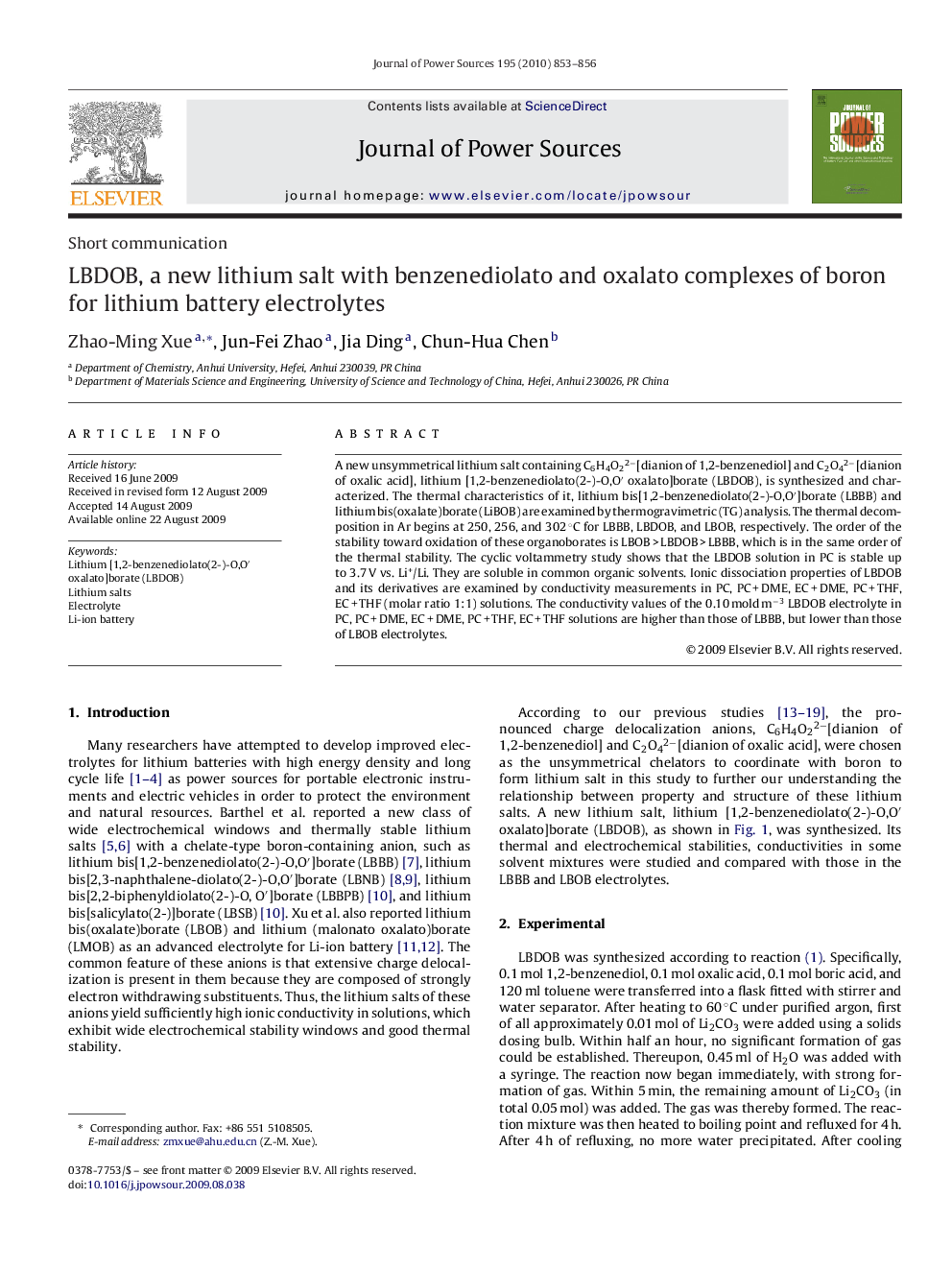| Article ID | Journal | Published Year | Pages | File Type |
|---|---|---|---|---|
| 1289322 | Journal of Power Sources | 2010 | 4 Pages |
A new unsymmetrical lithium salt containing C6H4O22−[dianion of 1,2-benzenediol] and C2O42−[dianion of oxalic acid], lithium [1,2-benzenediolato(2-)-O,O′ oxalato]borate (LBDOB), is synthesized and characterized. The thermal characteristics of it, lithium bis[1,2-benzenediolato(2-)-O,O′]borate (LBBB) and lithium bis(oxalate)borate (LiBOB) are examined by thermogravimetric (TG) analysis. The thermal decomposition in Ar begins at 250, 256, and 302 °C for LBBB, LBDOB, and LBOB, respectively. The order of the stability toward oxidation of these organoborates is LBOB > LBDOB > LBBB, which is in the same order of the thermal stability. The cyclic voltammetry study shows that the LBDOB solution in PC is stable up to 3.7 V vs. Li+/Li. They are soluble in common organic solvents. Ionic dissociation properties of LBDOB and its derivatives are examined by conductivity measurements in PC, PC + DME, EC + DME, PC + THF, EC + THF (molar ratio 1:1) solutions. The conductivity values of the 0.10 mold m−3 LBDOB electrolyte in PC, PC + DME, EC + DME, PC + THF, EC + THF solutions are higher than those of LBBB, but lower than those of LBOB electrolytes.
